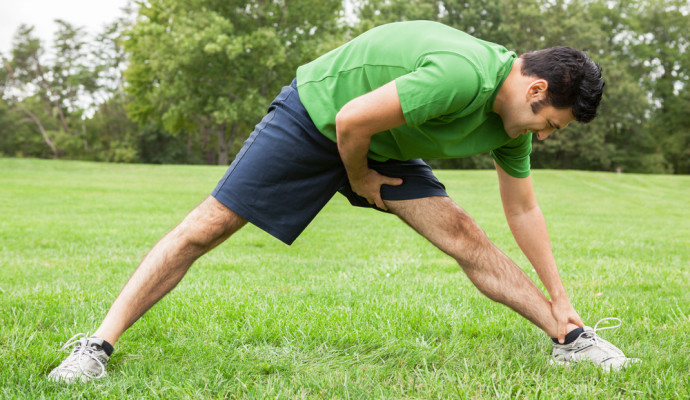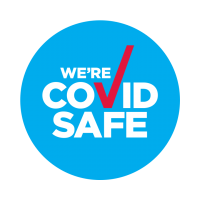By Raquel Sbrana, Registered Professional Level 2 (Cert IV Fitness/Group Exercise/Boxing/Kickboxing)
 The most forgotten part of any exercise regime is generally stretching and mobility. Some think it is “not required,” whilst others think “there’s no time!” Either way, we need to change the way we think in order to not only get the most out of our exercise sessions, but the most out of everyday life.
The most forgotten part of any exercise regime is generally stretching and mobility. Some think it is “not required,” whilst others think “there’s no time!” Either way, we need to change the way we think in order to not only get the most out of our exercise sessions, but the most out of everyday life.
So, what is so important about stretching and enabling the mobility of muscles and joints you ask? Put basically, when a joint or muscle cannot move as it should, there will always be another muscle or joint that works differently to how it is intended to, or overcompensates, to make up for the tightness. This is often how injuries and postural imbalances occur.
There are many ways to combat tightness and immobility. Keep reading to learn more.
COMMON PLACES FOR MUSCLE TIGHTNESS
The Calf & Achilles
There are many reasons for calf and Achilles tightness, including genetics (the inherited shape and length of the muscle as well as nerve behaviour) extensive walking, or walking uphill or on a gradient. It can also be caused by a weakness at another point in the leg, or body. In the case of an athlete, it can be caused by the continuous firing of the muscle to allow for stability in places like the ankle, and/or to absorb pressure from the landing of each stride, into the push of the next. It may be as simple as wearing high heels for too long. No matter what the cause of the tightness, it has an impact on how you do things.
During almost every article we tell you about the importance of functional exercises like the squat. Did you know that the number one cause of a poorly executed squat is tightness in the calf and Achilles? The reason for this is tightness not allowing our heels to stay firmly planted on the floor, which in turn places pressure on our knees and lower back. We perform the squat movement every single day; when we sit in a chair, or get out of the car. It is therefore imperative that we aim to keep our calf and Achilles mobile.
Hips
The main reason most people encounter hip tightness is from the amount of time we physically sit, whether it be at work in our offices, or at home on the computer or in front of the television. Regardless of why your hips become tight, it almost certainly will have a negative effect on your posture, and result in tightness in other areas like your hamstrings.
Hamstrings and Glutes
If these muscles are tight from things like poor hip posture, extensive walking or running, or injury, our lower back will try to perform (or allow for) the movement that our hamstrings are not. You will find that a lot of lower back pain sufferers have tightness in the hamstrings, and gluteals, generally coupled with weak core muscles.
Shoulders
 When we look at shoulder tightness there are several muscles that contribute to the problem.
When we look at shoulder tightness there are several muscles that contribute to the problem.
Tightness throughout the chest (pectoralis muscles) can be caused by many things; office workers who spend a lot of time at a computer often suffer from it, as do tradesmen who perform many duties repetitively using the front muscles of their body, like hammering nails. This tightness often results in the forward slump of the upper body and rounded shoulders, rather than a tall posture. Rounded shoulders (the pulling of the shoulder forward and down) also places strain on surrounding muscles, like traps and scalenes, which in turn can cause substantial neck pain and headaches.
Releasing pec tightness can assist in correcting rounded posture, placing the shoulder into a better position, and relieving surrounding muscle tightness and pain.
Excessive tightness in our Latissimus Dorsi (Lats – back) can cause the shoulder to be set in a compromising position, leaving us open to shoulder injury. Freeing up knots and soft tissue tightness in our lats is important for anyone who completes overhead movements regularly, whether it be for work or in training to make sure strain on the shoulder is managed.
The muscles that comprise our rotator cuff allow us to rotate the shoulder internally and externally. Poor internal rotation mobility leads to bad shoulder position and potential injury with movements like bench press, push ups, upright rows and Olympic lifts where the shoulder is forced to rotate forward and out of its strong position in the socket (in clients with limited mobility). Poor external rotation mobility leads to bad movement position overhead but is also a big factor in posture.
For more information regarding the causes of muscle tightness see one of Health Mates qualified trainers.
I KNOW I’M TIGHT… WHAT CAN I DO ABOUT IT?
No matter how much static stretching you do, sometimes it just will not be enough. We recommend many soft tissue therapies to use in conjunction with your stretching program. Keep in mind, Health Mates Exercise Advisors can help you will all facets of your flexibility program, as well as the following techniques.
First let’s look at Myofascia.
Myofascia is the dense tough tissue that surrounds and covers all your muscles and bones. In a healthy state Myofascia is relaxed and soft. Myofascia helps to maintain good posture, mobility as well as flexibility. It also gives our body’s great strength and helps us deal with excessive stress and injuries.
Myofascia is like yarn in a sweater, the entire body is connected to every other part of the body by the fascia. Similar to a pull in a sweater, damage to an area of myofascia can affect other distant areas in your body.
When Myofascia is damaged it loses it pliability and cause a number of problems such as;
- Headaches
- Muscle pain and spasms
- Chronic back and neck pain
- Recurring injuries
- Sciatica
- Breathing difficulties
- Sensations such as numbness and pins and needles
- Poor posture and reduced flexibility
How can a foam roller can help?
- Gets rid of knots and tightness in your muscles
- Physically de-stresses your body so it can work more efficiently
- Increases flexibility
- Increases blood flow, which helps for faster recovery from workouts
- Reduces soreness from workouts
- Aids to prevent injuries
One of the most important reasons for the regular use of a foam roller is to prevent exercise-related injuries. Many runners, for example often have a very tight ITB (a muscle running down the outside of our leg) if they don’t take care to massage the band of tissue. IT band syndrome and other similar injuries are caused when our muscles become too tight. Foam rolling every day ensures you are massaging fascia, in order to help prevent those areas from becoming injury trigger points.
How can a trigger point with a ball help?
Various balls are used for physical therapy rehabilitation of the shoulder, back ITB, hips, glutes, quads, and calves to break down scar tissue, reduce pain and improve range of motion. They are recommended for day-to-day self maintenance to ANYONE engaged in any kind of fitness regimen to improve elasticity, remove toxins held within soft tissues as they increase blood circulation and reduce recovery time from exercise. Soft tissue release with a ball is beneficial for people that are inactive as well as it will stretch and stimulate atrophied and inactive muscle tissue.
Trigger point massage often provides only temporary relief. Here are some basic tips and tricks to help make it last as long as possible;
- Treat only a few knots at a time, starting with the worst spots.
- Use heat in conjunction with treatment.
- Avoid fatiguing the muscle for about 24 hours after treatment.
- Move and stretch the muscles after the release of each knot.
How can resistance bands help?
 Resistance bands are extremely useful in a stretching routine because they maintain a constant stretch on the muscle. As the joint angle improves, the bands resistance improves and therefore creates a safe and effective stretching routine.
Resistance bands are extremely useful in a stretching routine because they maintain a constant stretch on the muscle. As the joint angle improves, the bands resistance improves and therefore creates a safe and effective stretching routine.
Seeing a professional
Getting a massage is definitely something I would recommend. Frequency would be dependent on the individual’s mobility and flexibility issues. Health Mates have five Massage Therapists onsite who are qualified in remedial massage, as well as specialty treatments such a Chinese Cupping.
If you haven’t had a massage before, or even if you’d like another, there is no better time. Plus we’re offering 500 for the Fight participants 5% off massage treatments.
Save 5% off your massage treatment
Present and print this page at time of massage.
Offer expires: 25/9/13
Voucher code: GP
Must be a financial member of RWC and a participant of 500 For The Fight.
Voucher can only be used for one visit, and cannot be applied to massage packs.







